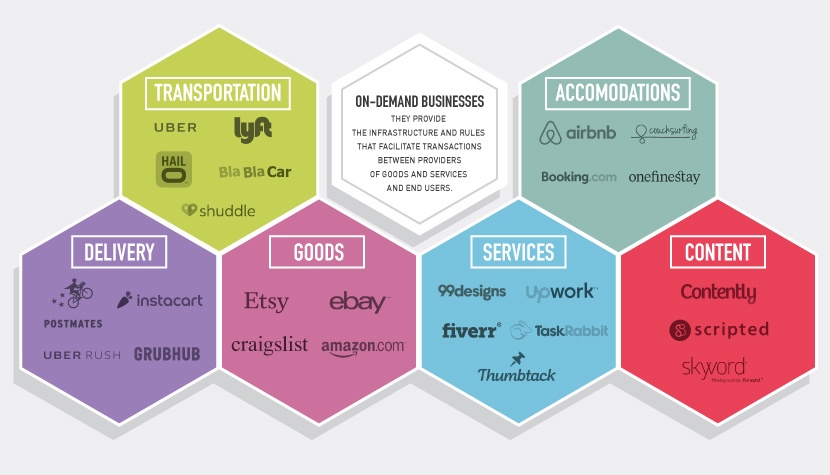Amazon's eCommerce growth and profit margin is largely driven by the company’s marketplace strategy. More than 50% of the units ordered in Amazon’s retail business are from its third-party marketplace sellers. Those sales are virtually pure profit for sellers as Amazon does not stock the product, fulfill it (unless the seller pays for Fulfillment by Amazon or FBA) or service it. Rather, Amazon simply takes a commission in exchange for connecting buyer and seller. That being said, we can assume that the lion's share of Amazon's innovation dollars are funded by marketplace sales and Amazon Web Services (AWS), the company’s Infrastructure-as-a-Service (IaaS) business-- not its own retail business.
Yet, on one of Amazon’s biggest shopping days of the year - an event Amazon invented and has touted as a way for sellers to grow their businesses, marketplace sellers appear to be getting the shaft. It begs the question: why aren't marketplace sellers getting a fair shake on Prime Day?
Following last year’s Prime Day, Amazon boasted a 60% increase in overall sales over its inaugural Prime Day. However, marketplace sellers only saw a 1% increase in sales. To make matters worse, in order to participate in Prime Day, most marketplace sellers need to enroll in the FBA or Seller Fulfilled Prime programs. These investments drain a lot of precious resources from smaller sellers but they investment in hopes of increased brand exposure and sales on this new shopping holiday. Oftentimes, after investing significant resources to promote, fulfill, and service products, these sellers realize that their products are being hidden from buyers behind behind Amazon’s own offers. Last year, some sellers were seething that there was virtually zero return on the large investment made on Prime Day.
The issue at hand is that Amazon Prime Day is frankly about optimizing Amazon's value chain, not about creating more opportunities for marketplace sellers. As Amazon builds more fulfillment centers and physical locations, it moves closer to the investments that are making traditional retail unprofitable today. To make sure these investments pay off, Amazon pushes to move its own products, which in turn means Amazon is consistently winning the buy box over its marketplace sellers.
But, as we learned in last year, many sellers invest heavily to capitalize on increased Prime Day shopping traffic because they believe they can significantly increase revenue. On a typical day, yes, Amazon customers win. When they search for products on Amazon.com, 83% of those products are offered by the third-party marketplace sellers. The massive amount of sellers and products in the marketplace ensures price competition, giving shoppers a great customer experience because the right seller wins the buy box..
On Amazon Prime day, however, what appears to be a bonus Cyber Monday to customers is actually not. It is a drastically reduced selection of Amazon's assortment, mostly owned by Amazon, that needs to move. How does Amazon get away with this bait-and-switch to its customers? Through the concept of infinite goodness, where customers trust Amazon implicitly and shop there because of experience, rather than just price. Thus, Amazon can get away with changing things up for a day and keeping the buy box to itself without damage to its reputation.
The irony is that Amazon built this “infinite goodness” with customers largely on the backs of its marketplace sellers. What this means for marketplace sellers is that the big investment in promoting products on Prime Day may actually be a bad venture. In fact, it can further harm sellers with a significant slowdown in business leading up to Prime Day as shoppers wait to see what kind of deals will be available on this new shopping holiday.
But, where else can sellers turn? Most Amazon marketplace sellers can also be found on Walmart’s Jet.com marketplace and on eBay, but outside of the big three, there are not many channels for these sellers. Since most sellers do a majority of their business on Amazon, they feel beholden to the platform. Alternatively, many retailers are coming online with their own marketplaces as success of the big three has proven consumers like to shop on marketplaces. Sellers should push their key retailers to launch their own marketplaces so they can get more of their assortment live.
Learn why Forrester says retailers should seize the marketplace opportunity.
Topics : Marketplaces Amazon B2C eCommerce

Written by Adrien Nussenbaum
Graduated from HEC Paris, Adrien Nussenbaum started his career with Paribas in Hong-Kong. He then went on to co-found All Instant, an instant messaging solution that was later sold in 2003. While with Deloitte, as part of the restructuring team, he advised many retailers who were in the throes of company turnarounds and transformations until 2005.


